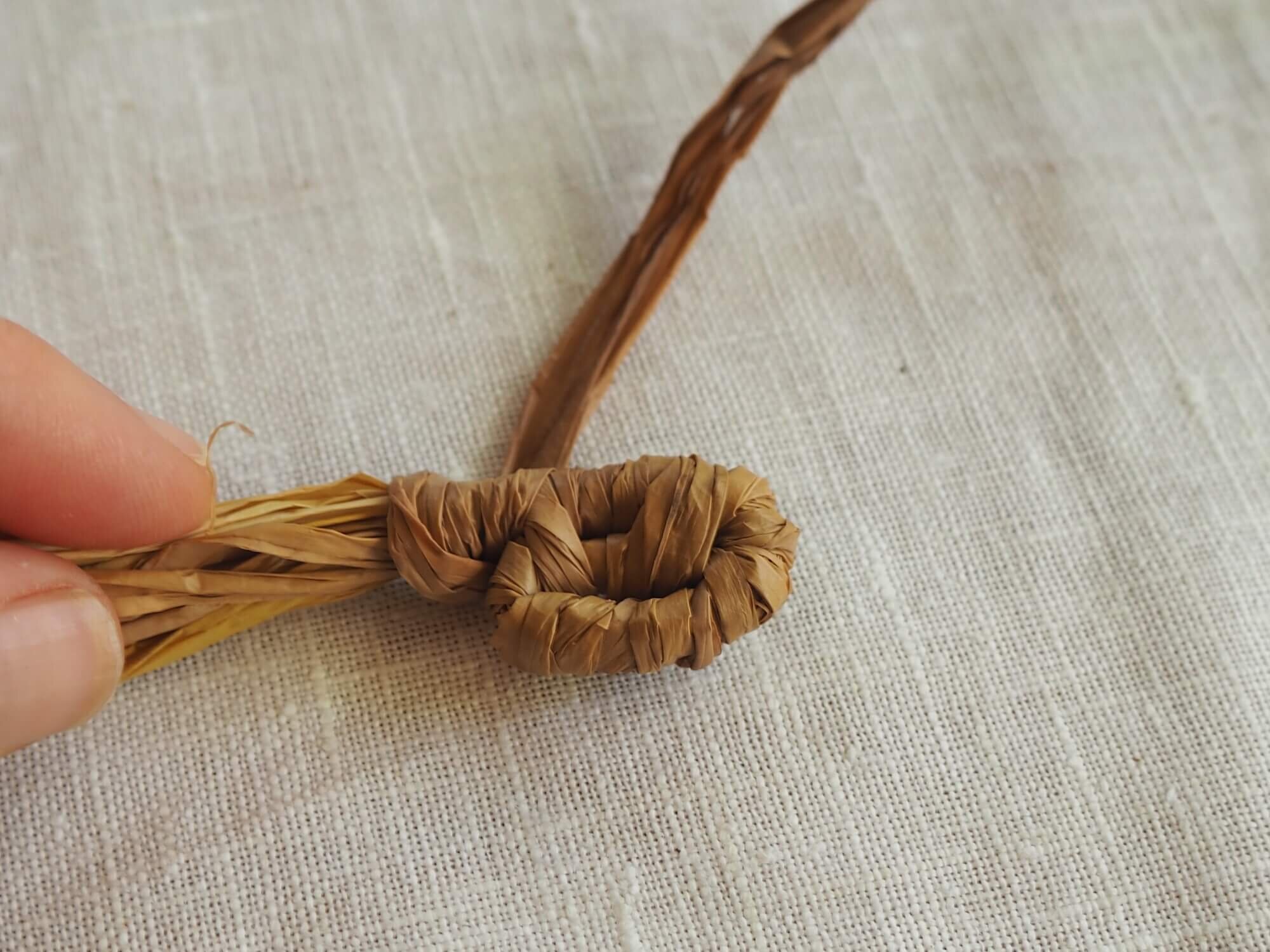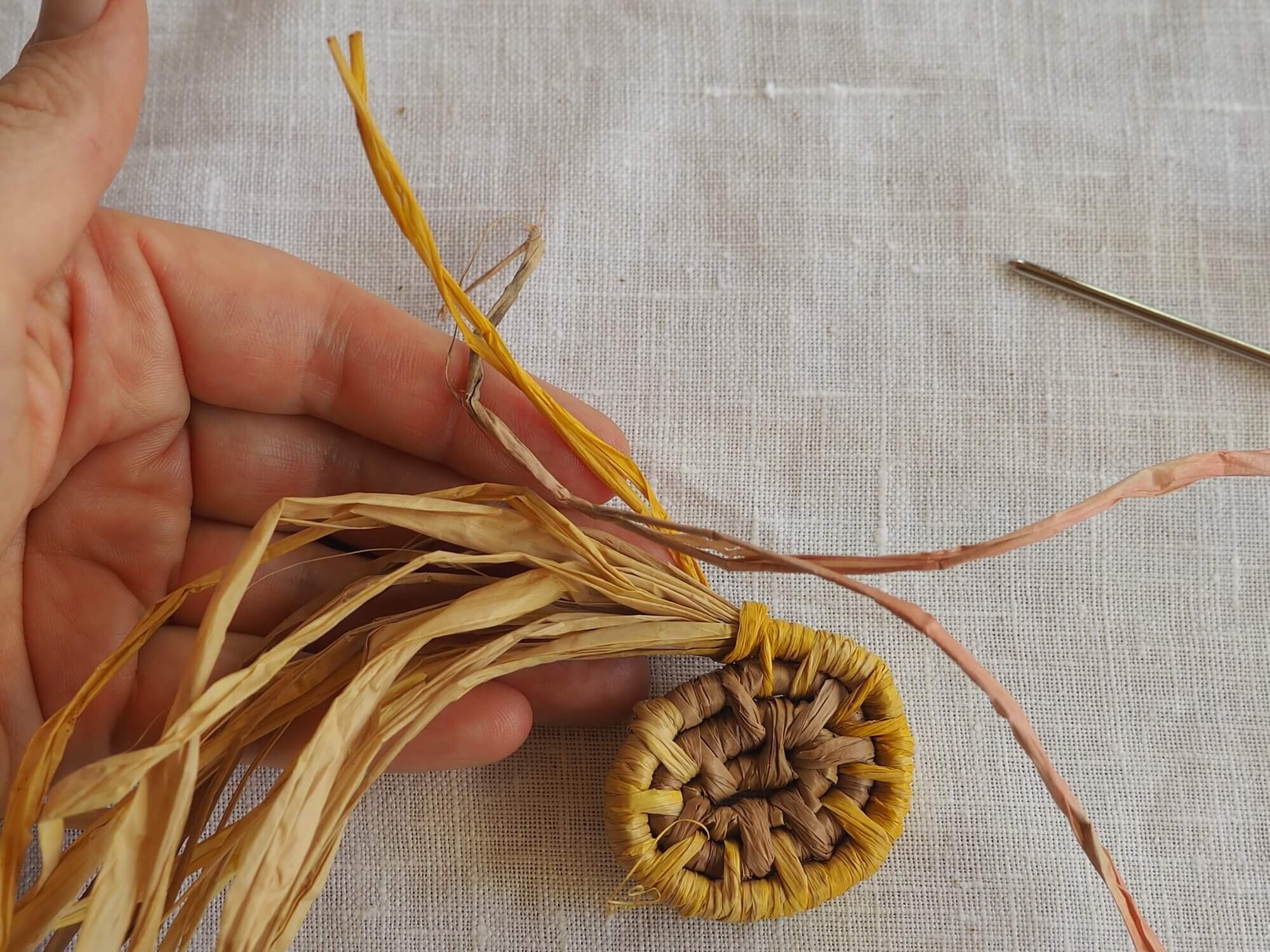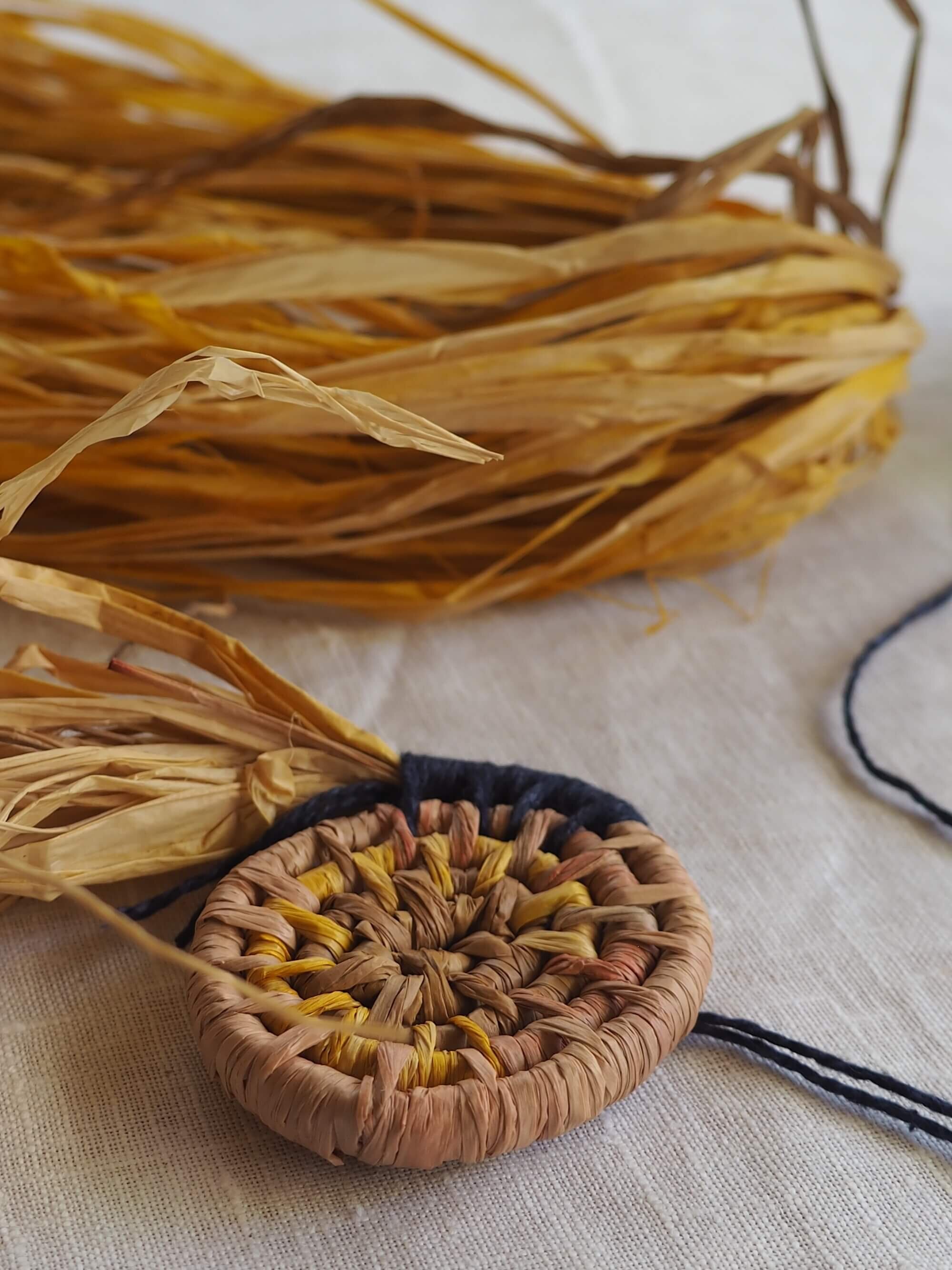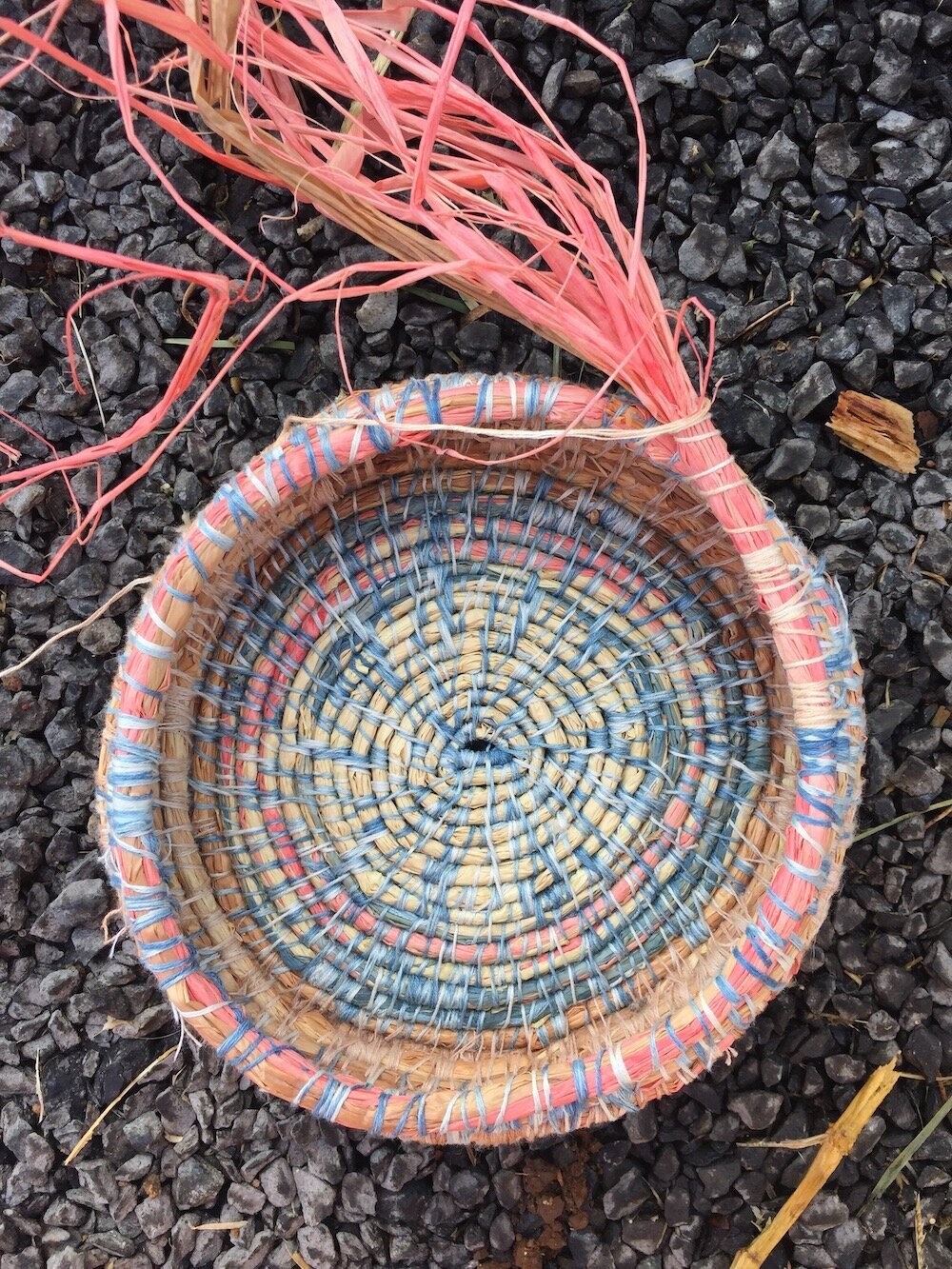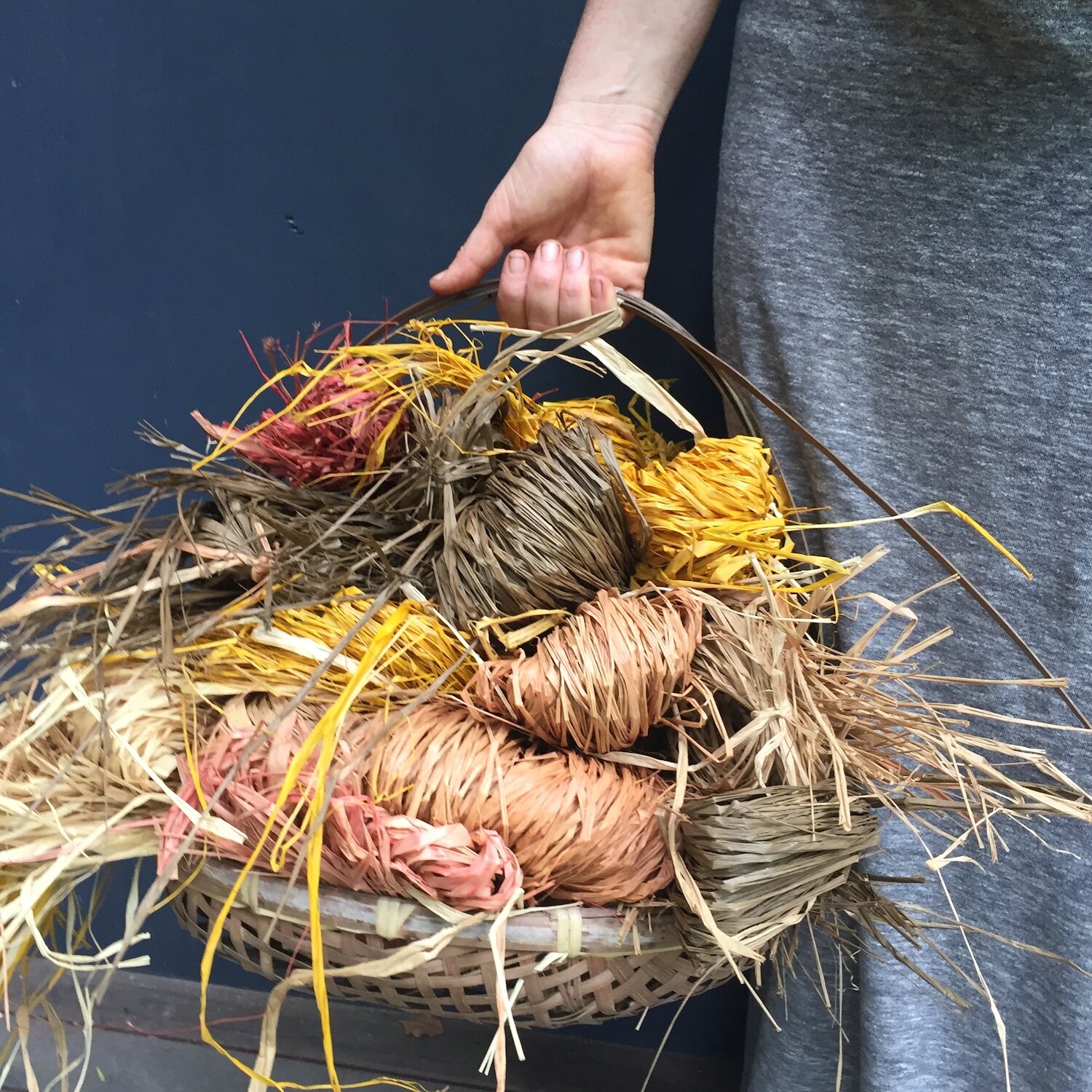learn how to weave a raffia basket
Basket weaving is almost as old as human history, taking fibres from the landscape and creating something useful, practical and beautiful. There are many many variations of materials to use, stitches, designs, techniques and processes.
Sometimes I look at the beautiful baskets I use for taking to the farmers market, or the ones holding my yarns and fabrics, the broken yet still useful basket that my cat sleeps in beside the fire, the basket my parents used for the washing basket, even the beautiful basket a local artist / craftswoman made for them for my sister to lie in as a baby (40 years ago).
These are intricate and amazing, they delight me in the way that someone’s mind and hand created it.
Often they look complicated, and out of my reach of achieveable-ness in terms of my skills, but the beautiful truth (I think) about baskets is that anyone can weave their own basket. Starting small of course is a way to begin, but once you have the fever of basket weaving inside you, it feels like ‘coming home’ and you have a hard time stopping.
So, how do you weave your own baskets?
You might even have some supplies at home, without having to go and buy more. To begin I do often suggest you use what you have, to make do with materials, but of course - whatever you use for your basket will determine the structure and the method.
These ones here are made from raffia, which is a natural fibre from a palm tree. I dye it with natural plant dyes. It creates a structure, but is also soft and pliable, unlike say hard willow bark, for instance. What this means is that the basket you make will most likely be less rigid than a basket you’d use for your washing (which would possibly be made of willow branches or similar). More like a lovely basket as a fruit bowl, a lampshade, a trinket platter, or a display on the wall.
There’s a little photo step-by-step below if you want to make your own woven baskets, or my online basket weaving course is full of videos showing you the whole process - as if you’re sitting right beside me in the studio.
What is raffia & where do I get it?
Raffia is the leafy fibre of a palm tree. It comes in various grades depending on it’s length and overall structure or quality. The longer pieces are good for the wrapping method, while shorter (lower grade) can be used as the core for your basket, like the bulk to fill the inside.
What about plastic or paper raffia? I have seen plastic raffia at yarn shops, that comes in one long spool so you can use it with a crochet hook, instead of a weaving needle. Real raffia itself does have a plastic-y like feel, but it’s a natural fibre that breaks down and decomposes back into the Earth, whereas plastic raffia is …. well… plastic. So keep this in mind, if this is important to you. Paper raffia is another option, not quite as strong, but an interesting alternative if you can’t find real raffia.
I get my raffia from String Harvest, as I know Cass imports fair trade materials, but you can also find it at regular art & craft shops, fabric supply shops, and even some floristry supply shops (florists use it to tie their bunches up). You can also find it on places like Etsy, that will be in your own country for shipping, etc.
But if you don’t want to buy raffia, unsure if you’ll even love the craft, then you can use fabric, string, twine, embroidery thread, ribbon. Almost anything like that will work.
Using the exact same method as my videos show, but different materials, textures, weights and weaves you get very different outcomes and looks. It’s a wonderful way to change things up, but not have to keep learning another how-to.
You could instead get some pieces of cloth and cut them up into strips, using thread or string the weave / stitch / wrap around strips of fabric. This does make a softer, less structured basket shape - but you could always use a length of thicker string or rope wrapped into the fabric to give it more stability.
All of these options make beautiful baskets, some are more structured than others, but with time, practice and patience you can learn how to manipulate the fibres to work under your hands how you’d like.
These videos show some simple stitches to inspire you, but I have a whole online course that take you from the very basics of how to begin right through to how to create patterns in your weaves, changing colours and making different shapes.
My online raffia basket weaving course takes you from the very basics of ‘what even IS raffia?’ right through to creating your own masterpieces. My step-by-step videos are filmed in such a way that you’re sitting right beside me, in my forest studio, surrounded by bird calls and the quietness of nature.




